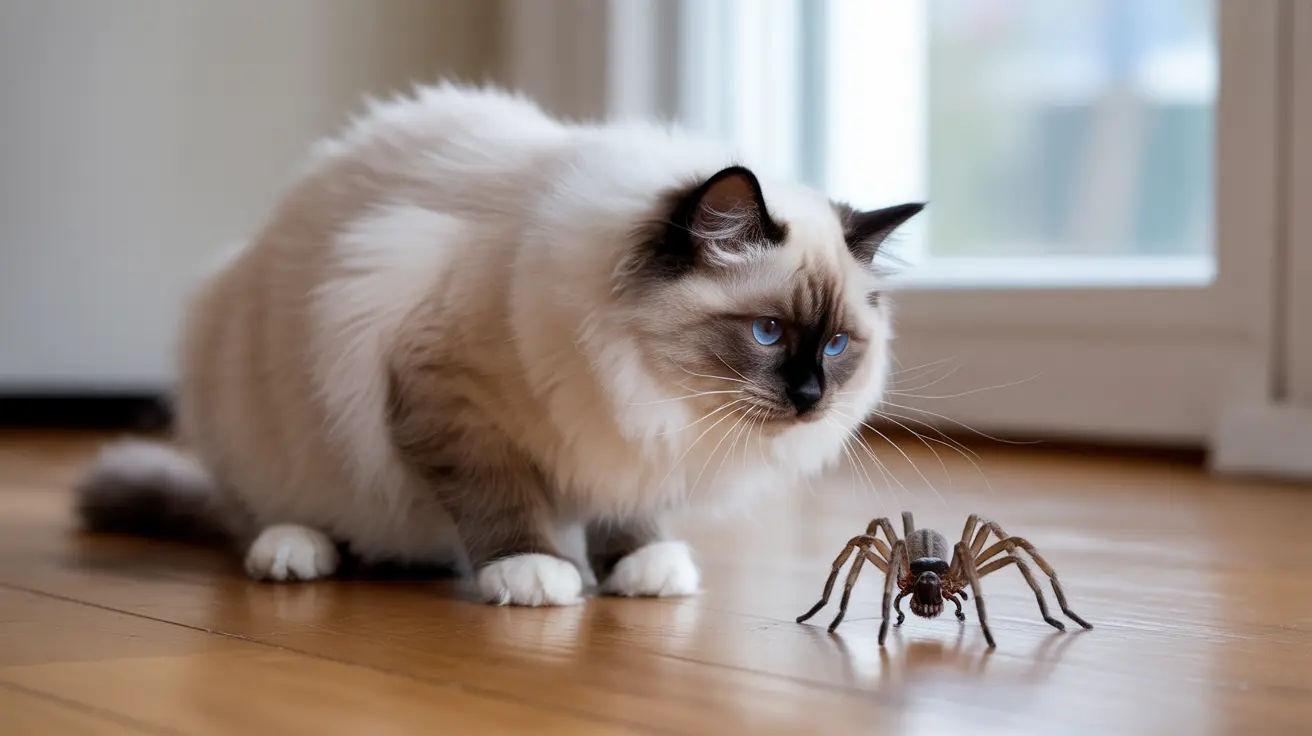As a cat owner, discovering wolf spiders in your home can be concerning. These large, hairy arachnids might look intimidating, but understanding their actual threat level to your feline friend is crucial for peace of mind and appropriate care.
In this comprehensive guide, we'll explore the truth about wolf spiders and their interaction with cats, including bite risks, symptoms to watch for, and proper treatment approaches. Let's separate fact from fiction and learn how to keep your cat safe.
Understanding Wolf Spider Venom and Cats
Wolf spiders are actually mildly venomous, not poisonous - an important distinction. Their venom is designed to paralyze small insects, not harm larger animals like cats. When a wolf spider bites a cat, the venom typically causes only mild local reactions and rarely leads to serious complications.
The good news is that wolf spiders aren't aggressive toward cats unless they feel threatened. Most encounters between cats and wolf spiders end without incident, though curious cats might get bitten while investigating or playing with the spider.
Common Symptoms of Wolf Spider Bites in Cats
If your cat does get bitten by a wolf spider, you might notice:
- Mild swelling at the bite site
- Redness around the affected area
- Temporary discomfort or irritation
- Increased licking or pawing at the bite location
These symptoms usually resolve on their own within 24-48 hours without requiring veterinary intervention.
Treatment and When to Seek Veterinary Care
Most wolf spider bites can be managed at home by:
- Cleaning the bite area with mild soap and water
- Monitoring the site for signs of infection
- Preventing your cat from excessive scratching or licking
However, seek immediate veterinary attention if you notice:
- Severe swelling that continues to spread
- Signs of an allergic reaction (difficulty breathing, lethargy)
- Pus or unusual discharge from the bite site
- Your cat showing signs of significant pain or distress
Prevention and Home Safety
To minimize the risk of wolf spider encounters:
- Seal entry points around windows and doors
- Keep your home clean and free of clutter
- Regularly inspect dark corners and basement areas
- Use natural spider deterrents like citrus peels or vinegar
- Maintain a regular pest control schedule
What If My Cat Eats a Wolf Spider?
If your cat manages to eat a wolf spider, there's generally no cause for alarm. The spider's venom is only effective when injected through a bite, not when ingested. Your cat's digestive system will typically break down the spider without any issues.
However, monitor your cat for any unusual symptoms like vomiting or decreased appetite, though these reactions are rare.
Frequently Asked Questions
Are wolf spiders poisonous or venomous to cats, and how dangerous are their bites?
Wolf spiders are mildly venomous but not poisonous to cats. Their bites typically cause only minor local reactions and are rarely dangerous, similar to a bee sting in terms of severity.
What symptoms should I look for if my cat is bitten by a wolf spider?
Watch for localized swelling, redness, and mild discomfort at the bite site. Severe reactions are rare but possible. Monitor your cat for excessive licking or pawing at the affected area.
How should I treat a wolf spider bite on my cat and when should I see a vet?
Clean the bite area with soap and water and monitor for infection. See a vet if you notice severe swelling, signs of allergic reaction, or if the bite becomes infected.
Can my cat get sick from eating a wolf spider, and what are the risks?
Eating a wolf spider rarely causes illness in cats. The venom is only effective when injected through a bite. Monitor for unusual digestive symptoms, but serious reactions are extremely uncommon.
How can I prevent wolf spider encounters to protect my cat at home and outdoors?
Maintain clean living spaces, seal entry points, reduce clutter, and consider natural spider deterrents. For outdoor cats, supervise their activity during peak spider seasons.
Remember, while wolf spiders might look scary, they pose minimal risk to your feline companion. By understanding their nature and taking basic precautions, you can ensure your cat stays safe and healthy.






